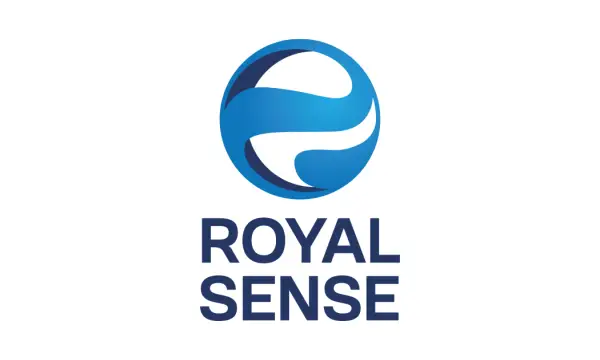How TDS on Salary is Calculated?

Tax Deducted at Source (TDS) on salaries is a mechanism employed by the Indian government to collect income tax directly at the source of income. This process ensures a steady flow of income to the government and reduces the tax burden on employees at the end of the fiscal year. Understanding the intricacies of TDS calculation can empower employees and employers alike, ensuring compliance with tax laws and optimizing tax liabilities. Here’s a detailed exploration based on the outlined structure.
Also Read: How to File Maturity Claim for LIC Policy to Get Your Money?
Contents
- 1 Introduction to TDS on Salaries
- 2 Understanding the Legal Framework for TDS on Salary
- 3 Who is Obligated to Deduct TDS?
- 4 How TDS on Salary is Calculated?
- 5 Exemption Limits and Taxable Income
- 6 Tax Regimes and Their Impact on TDS Calculation
- 7 Allowances and Deductions
- 8 Monthly Deduction of TDS
- 9 Mandatory Nature of TDS Deduction
- 10 Claiming TDS Refunds and Adjustments
- 11 Strategies for Reducing TDS Liability
- 12 Compliance and Documentation
- 13 Conclusion
Introduction to TDS on Salaries
TDS is a critical component of the Income Tax Act, of 1961, aiming to collect tax from the very source of income. When it comes to salaries, employers are mandated to deduct a certain percentage of tax before making the payment to their employees. This preemptive tax collection contributes significantly to the nation’s treasury and helps in regulating tax evasion.
Understanding the Legal Framework for TDS on Salary
The legal groundwork for TDS on salaries is laid out in Section 192 of the Income Tax Act, of 1961. This section mandates employers to deduct tax based on the applicable income tax slab rates for the financial year. The deduction is contingent on the presence of an employer-employee relationship, irrespective of the employer’s category or the total number of employees.
Who is Obligated to Deduct TDS?
Entities such as individuals, companies (private or public), Hindu Undivided Families (HUFs), trusts, partnership firms, and co-operative societies, when acting as employers, are required to deduct TDS from their employees’ salaries. The key criterion for TDS deduction is the establishment of an employer-employee relationship, ensuring that tax obligations are met universally across different organizational structures.
How TDS on Salary is Calculated?
The process of calculating TDS on salary involves several steps. Initially, employers estimate the annual income of the employee, including all salary components like basic pay, allowances, and bonuses. Subsequently, exemptions and deductions are accounted for to arrive at the gross taxable income. The applicable income tax rate, based on the employee’s income slab, is then applied to calculate the tax payable, which is divided by the number of months in the financial year to determine the monthly TDS amount.
Steps to Calculate TDS on Salary
Step 1: Estimate Annual Income The first step involves aggregating the employee’s annual income. This includes all salary components such as basic pay, house rent allowance (HRA), special allowances, bonuses, and any other income earned through the employer.
Step 2: Calculate Exemptions Identify and subtract exemptions available under the Income Tax Act. Common exemptions include HRA (based on salary, rent paid, and location), standard deduction (₹50,000 for FY 2019-20 onwards), and other allowances like conveyance and children’s education allowance.
Step 3: Deduct Professional Tax Professional tax, if applicable in the employee’s state, is deducted from the gross income. The amount varies from state to state.
Step 4: Deduct Investments and Deductions Subtract eligible investments and expenditures under various sections like 80C (PPF, EPF, LIC premiums, home loan principal repayment, etc.), 80D (medical insurance premiums), and other applicable sections from the gross taxable income. The maximum limit under section 80C is ₹1.5 lakhs.
Step 5: Calculate Taxable Income The result after deductions is the net taxable income. Apply the relevant income tax slab rates to this income to calculate the tax payable for the year.
Step 6: Add Cess Add health and education cess to the tax calculated. As of FY 2019-20, the cess is 4% of the total tax payable.
Step 7: Calculate Monthly TDS Divide the annual tax liability (including cess) by 12 to find the monthly TDS amount to be deducted by the employer.
Example of TDS Calculation on Salary
Let’s consider an example for Mr. A, a 35-year-old employee residing in Bangalore, with the following income and investments for the FY 2019-20:
- Monthly Basic Pay: ₹50,000
- HRA: ₹20,000
- Special Allowance: ₹10,000
- Professional Tax: ₹2,400 annually
- Investments under 80C: ₹1,50,000
- Medical Insurance (80D): ₹25,000
Calculation:
Annual Income Calculation:
-
- Basic Pay: ₹50,000 * 12 = ₹6,00,000
- HRA: ₹20,000 * 12 = ₹2,40,000
- Special Allowance: ₹10,000 * 12 = ₹1,20,000
- Gross Annual Income: ₹9,60,000
Exemptions and Deductions:
-
- Standard Deduction: ₹50,000
- Professional Tax: ₹2,400
- 80C Deductions: ₹1,50,000
- 80D Deductions: ₹25,000
Taxable Income:
-
- Gross Income: ₹9,60,000
- Total Deductions: ₹2,27,400 (₹50,000 + ₹2,400 + ₹1,50,000 + ₹25,000)
- Net Taxable Income: ₹7,32,600
Tax Calculation (as per FY 2019-20 slab rates):
-
- Up to ₹2,50,000: Nil
- ₹2,50,001 – ₹5,00,000: 5% of ₹2,50,000 = ₹12,500
- ₹5,00,001 – ₹7,32,600: 20% of ₹2,32,600 = ₹46,520
- Total Tax: ₹59,020
Adding Cess:
-
- Health and Education Cess: 4% of ₹59,020 = ₹2,361
- Total Tax + Cess: ₹61,381
Monthly TDS:
-
- ₹61,381 / 12 ≈ ₹5,115
Therefore, Mr. A’s employer would deduct approximately ₹5,115 per month as TDS from his salary.
Exemption Limits and Taxable Income
The basic exemption limit is the income threshold below which no income tax is charged, and consequently, no TDS is deducted. These limits vary based on the taxpayer’s age category. For example, for individuals below 60 years, the limit is ₹2.5 lakhs. Understanding these limits is crucial for calculating the taxable income and the subsequent TDS.
Tax Regimes and Their Impact on TDS Calculation
The introduction of the dual tax regime offers taxpayers the choice between the new and old regimes, each with different tax rates and exemption/deduction rules. The choice between these regimes significantly impacts the calculation of TDS, as the new regime offers lower tax rates but fewer exemptions and deductions.
Allowances and Deductions
Various allowances like House Rent Allowance (HRA), Standard Deduction, and Leave Travel Allowance (LTA), and deductions under sections like 80C and 80D of the Income Tax Act, play a pivotal role in determining taxable income. Employers need to account for these when calculating TDS.
Monthly Deduction of TDS
TDS on salary is deducted monthly, coinciding with the employee’s pay cycle. This ensures a systematic approach to tax collection and prevents any end-of-year tax payment shocks for the employee.
Mandatory Nature of TDS Deduction
Deduction of TDS on salary is not optional but a mandatory requirement for all employers when the employee’s income exceeds the basic exemption limit. Compliance with this provision is essential to avoid penalties and interest for both the employer and the employee.
Claiming TDS Refunds and Adjustments
If the total tax deducted at source exceeds the actual tax liability of the employee, the excess amount can be claimed as a refund by filing the income tax return. Employers can also adjust the TDS amount against any previous under-deductions or over-deductions in the same financial year.
Strategies for Reducing TDS Liability
Employees can reduce their TDS liability by investing in tax-saving instruments under various sections of the Income Tax Act. Declarations of such investments and expenditures are crucial for optimizing the TDS deductions.
Compliance and Documentation
Employers are obligated to provide TDS certificates (Form 16) to their employees, detailing the salary paid and the tax deducted. Additionally, employers must file TDS returns timely, ensuring compliance with the legal requirements.
Conclusion
Understanding how TDS on salary is calculated is fundamental for both employers and employees. It not only ensures compliance with the tax laws but also aids in financial planning and tax optimization. By acquainting themselves with the process, exemptions, and deductions, taxpayers can navigate the complexities of TDS more effectively, ensuring a smoother financial journey throughout the fiscal year.





